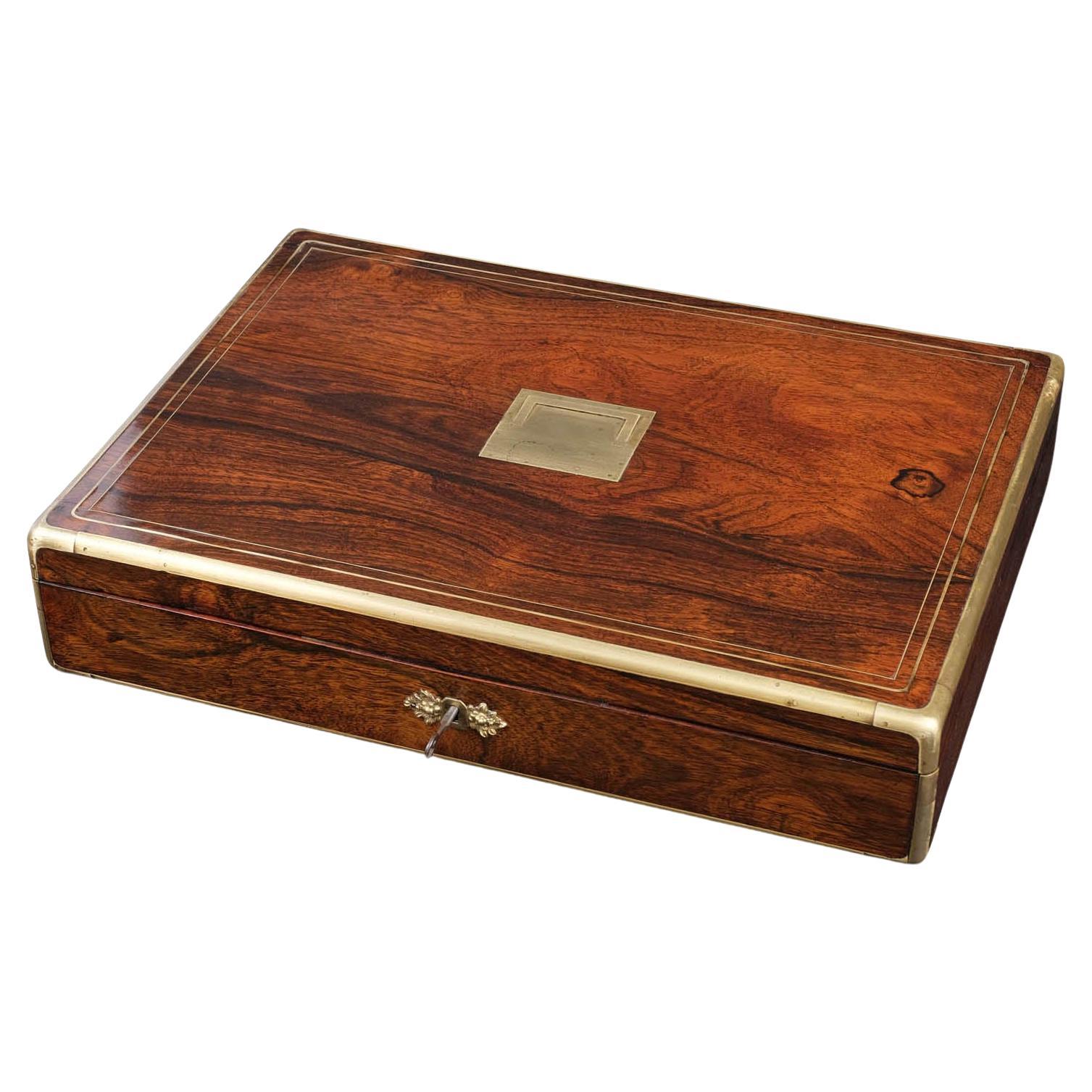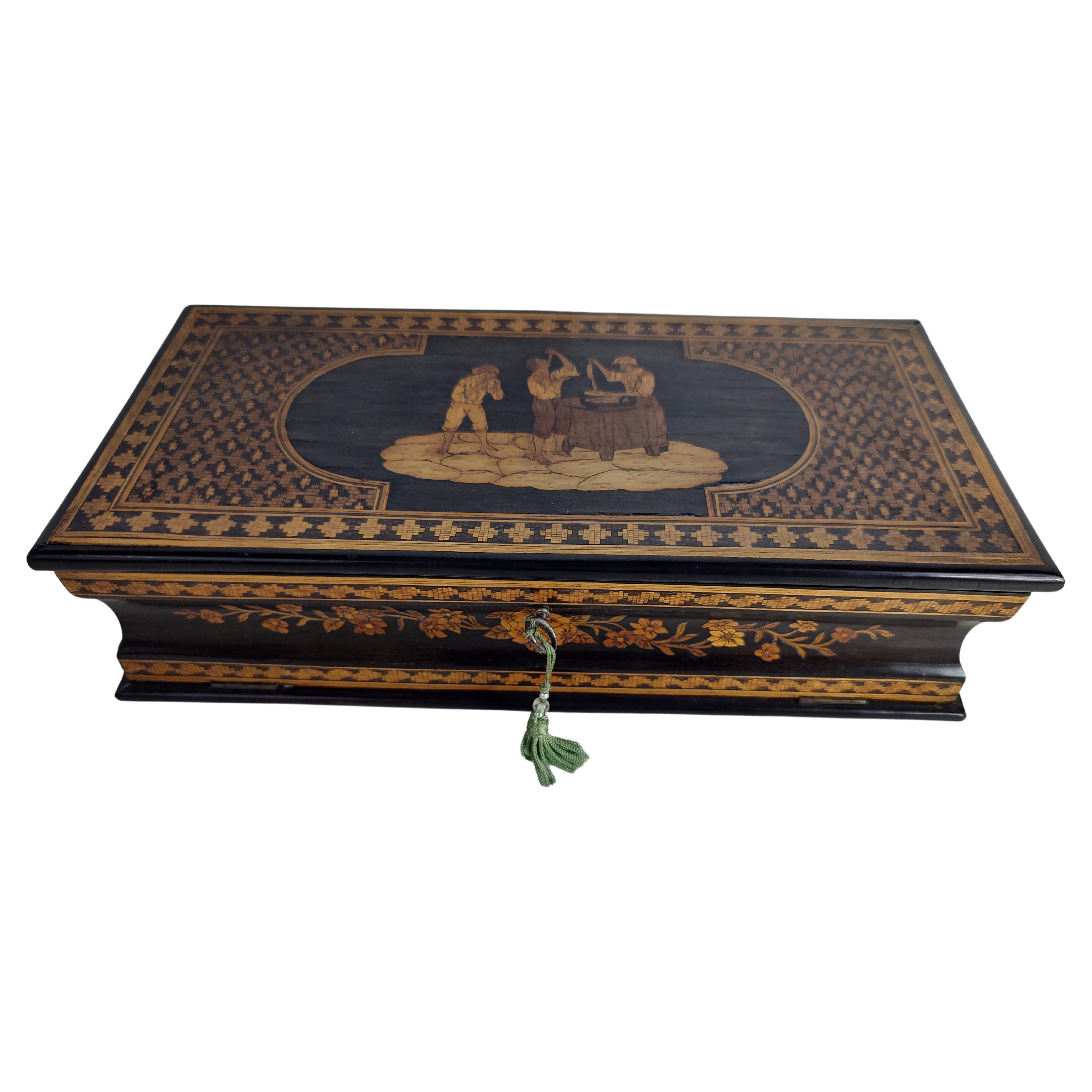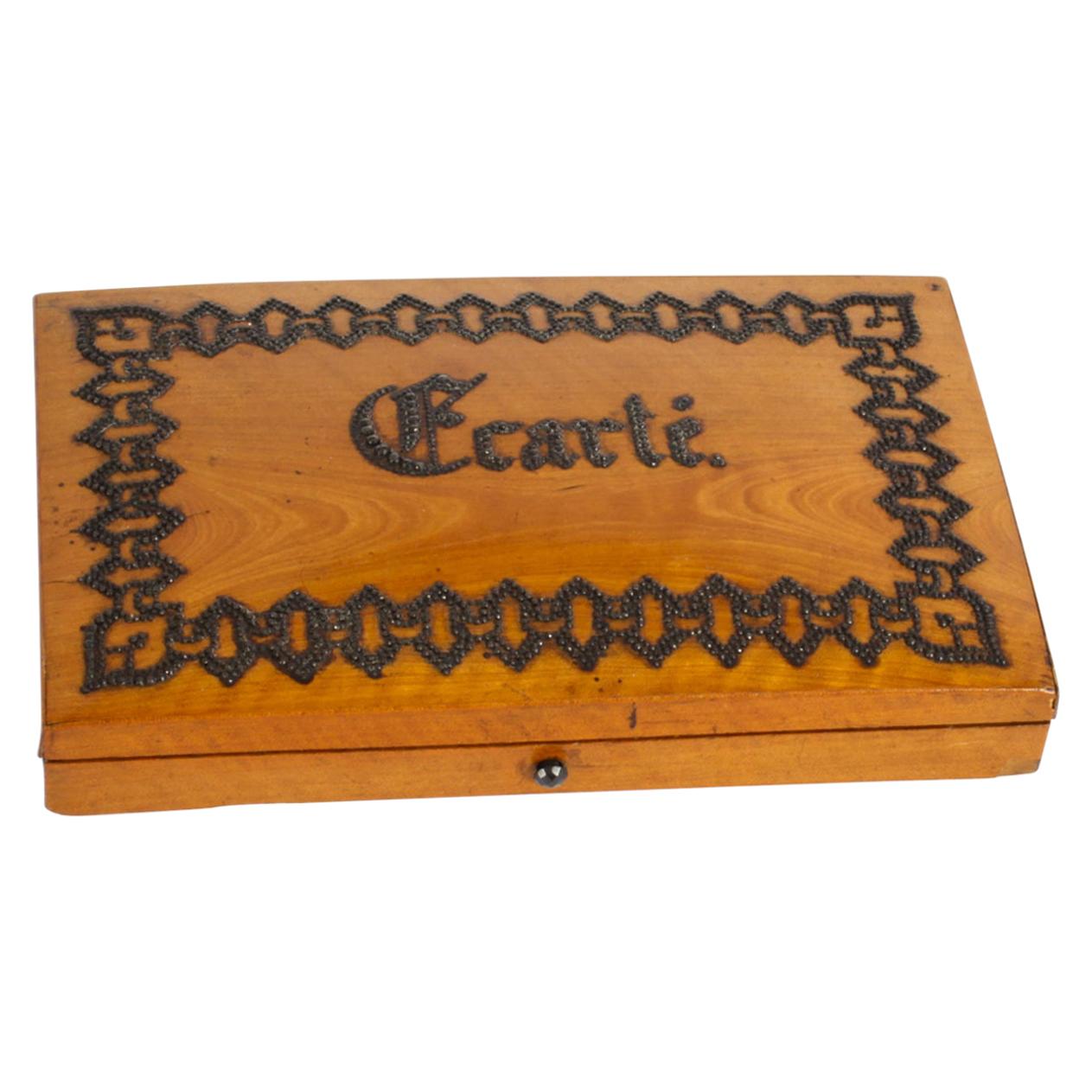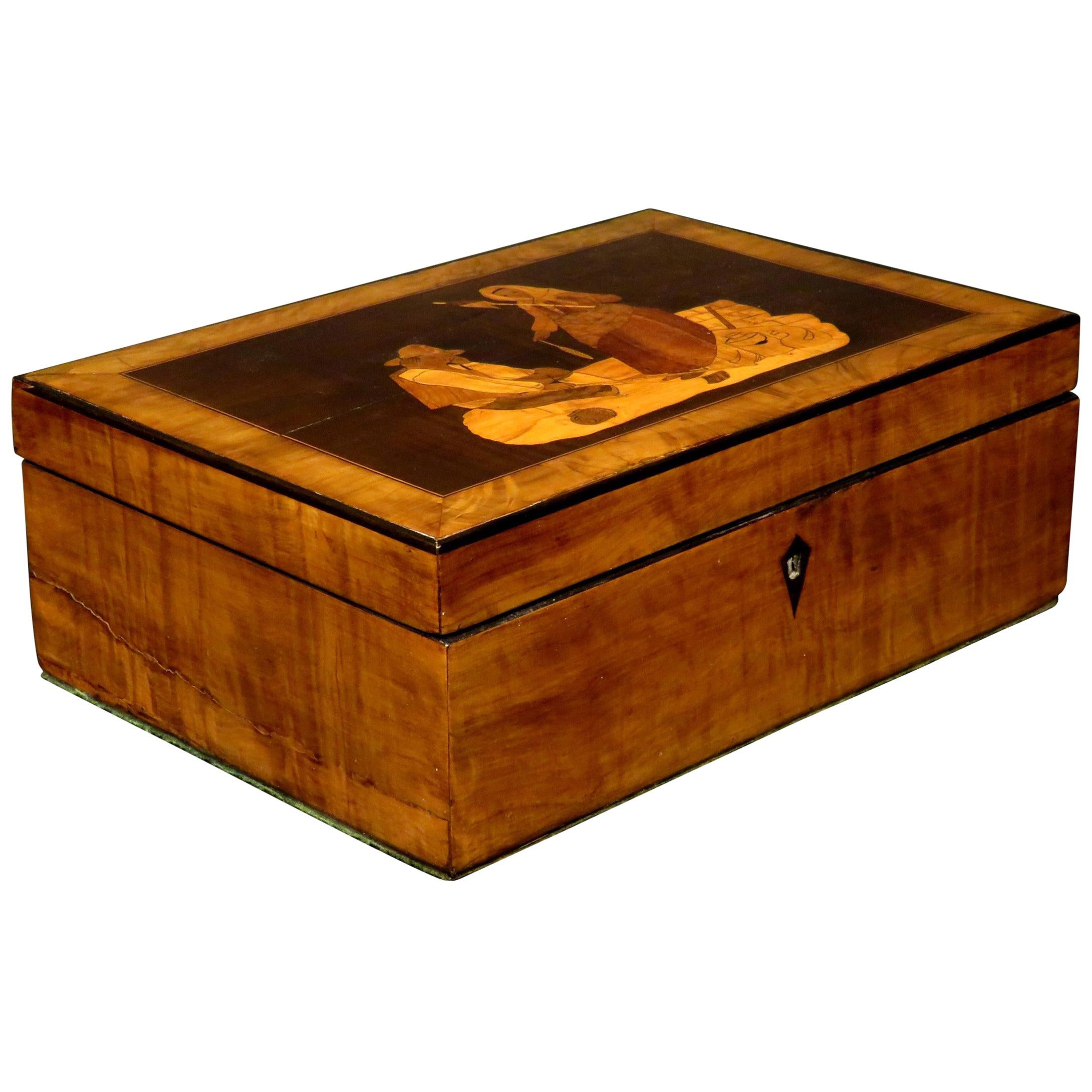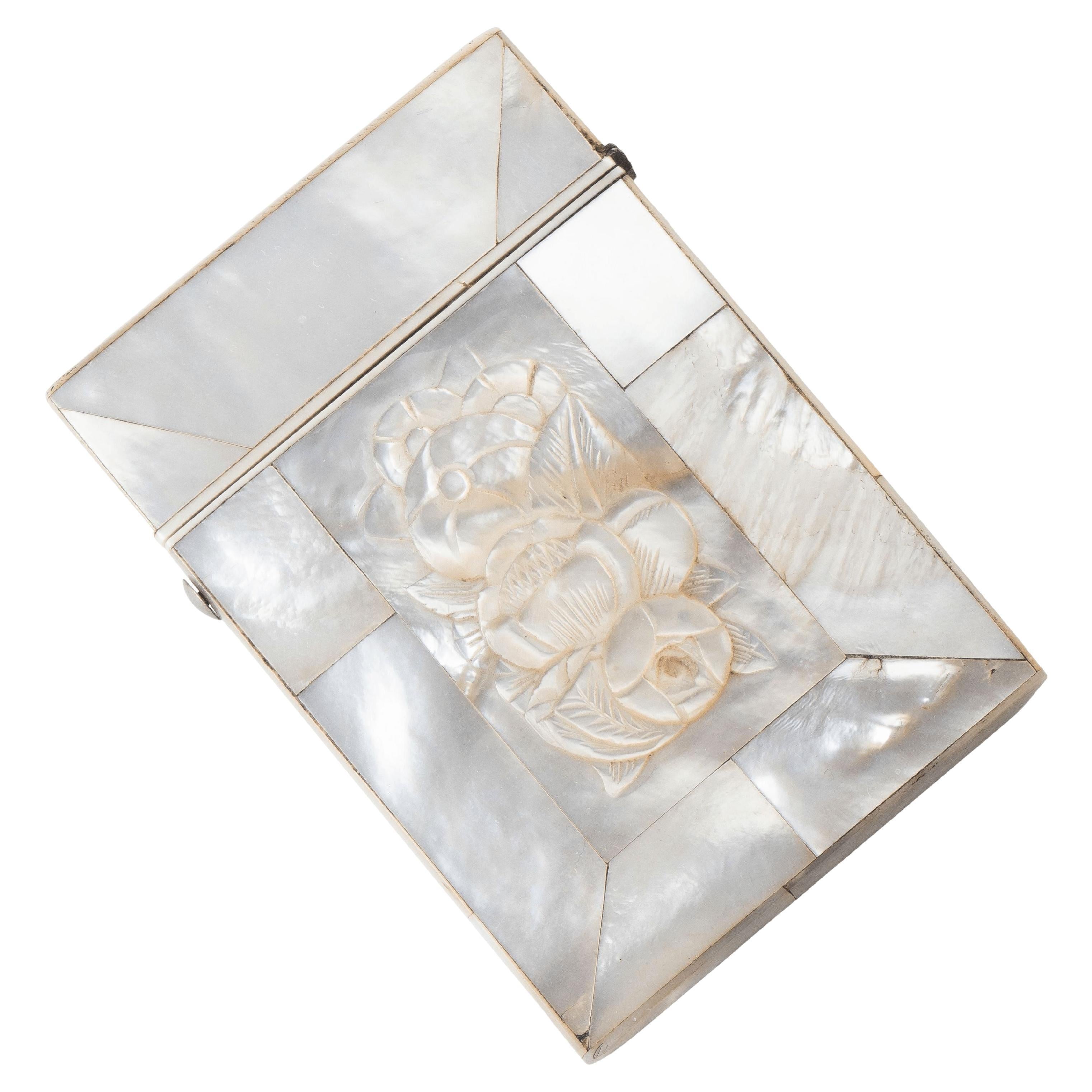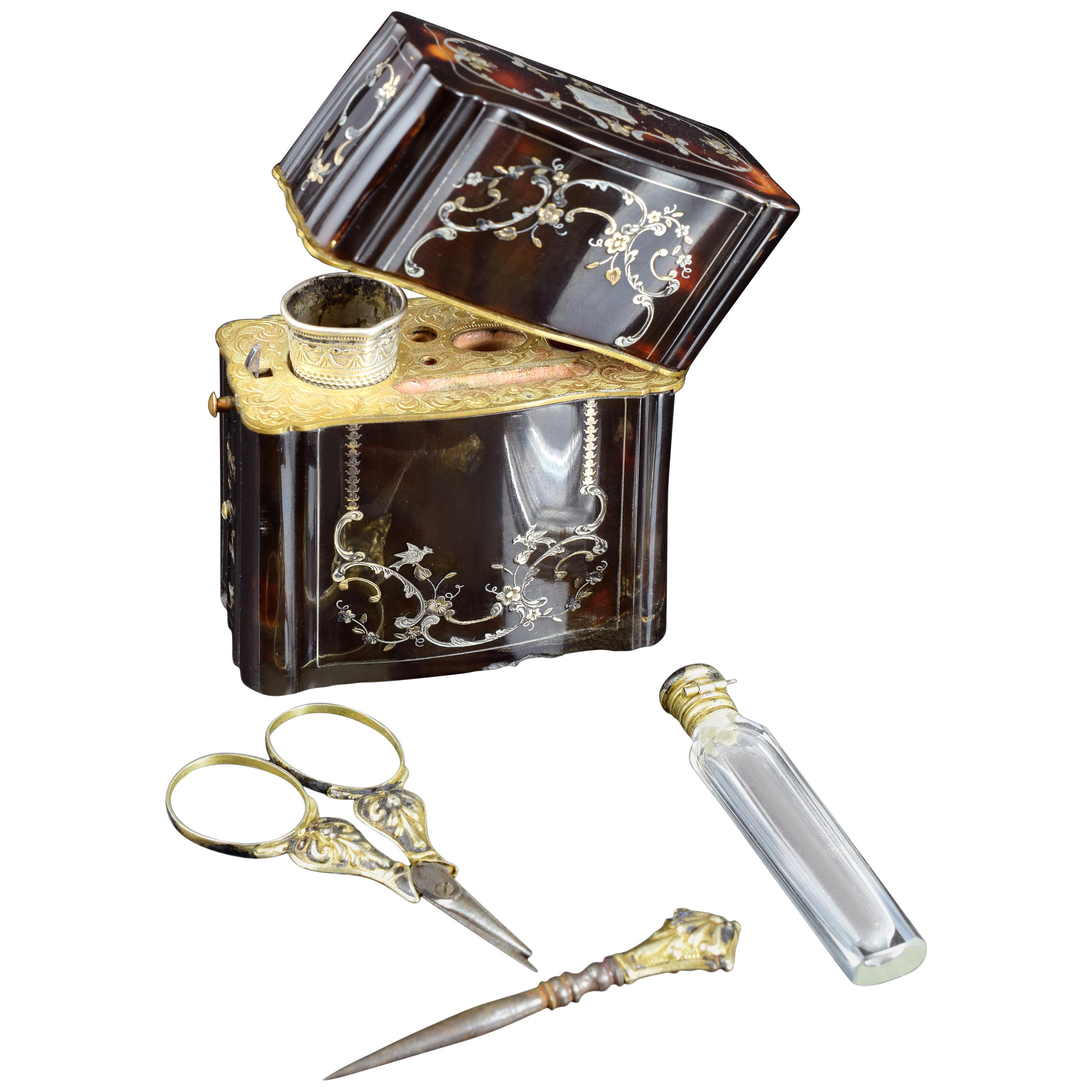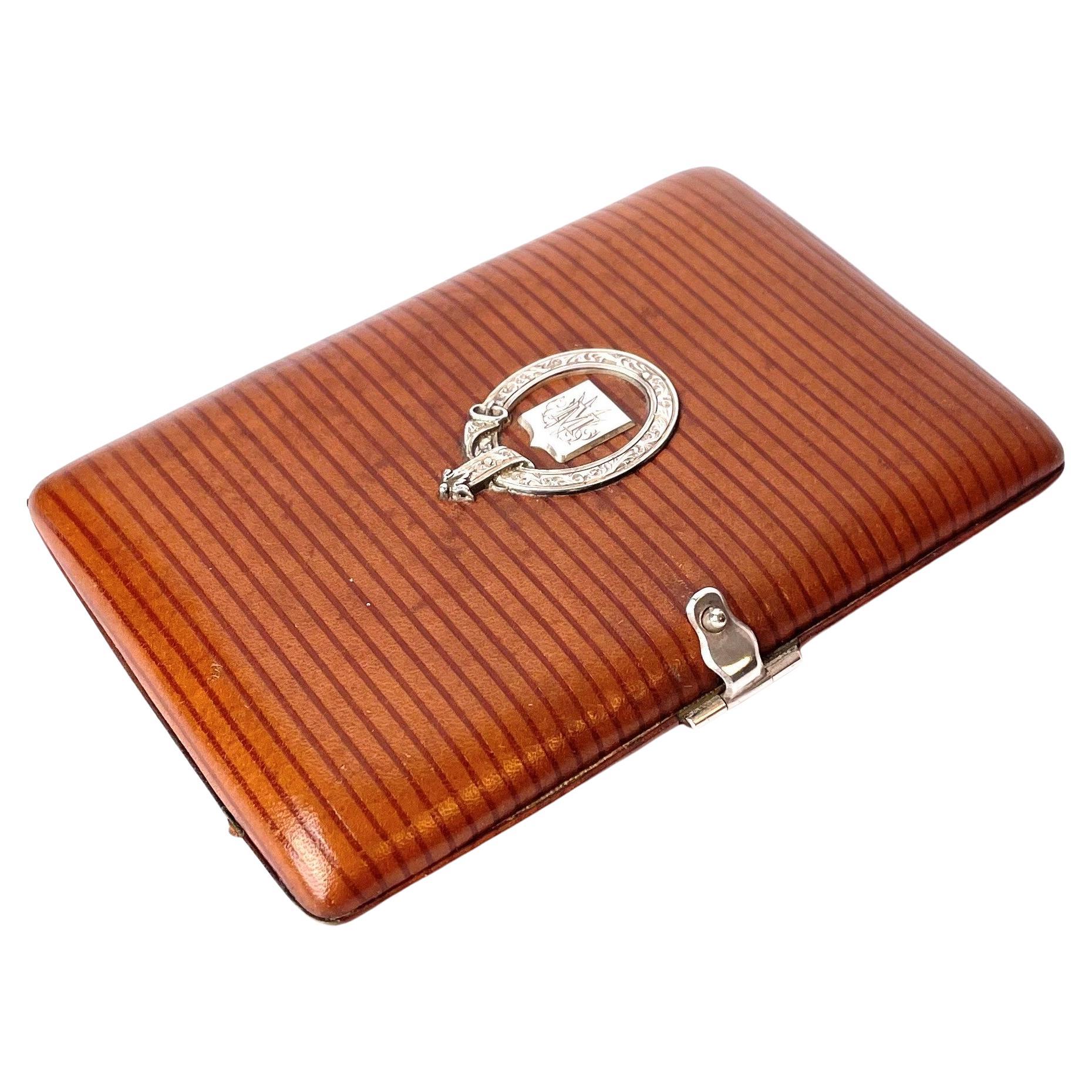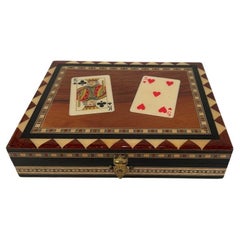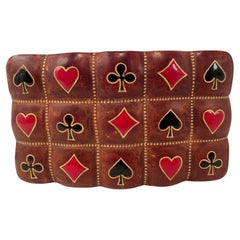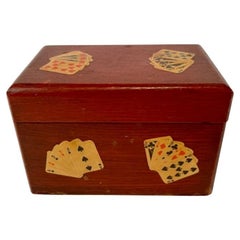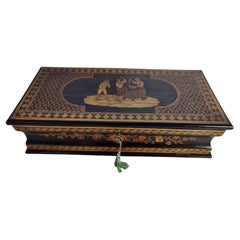
19th Century Italian Sorrento Inlaid Mosaic Playing Card Case
View Similar Items
Want more images or videos?
Request additional images or videos from the seller
1 of 19
19th Century Italian Sorrento Inlaid Mosaic Playing Card Case
About the Item
- Dimensions:Height: 5.5 in (13.97 cm)Width: 3.4 in (8.64 cm)Depth: 1.9 in (4.83 cm)
- Style:Belle Époque (Of the Period)
- Materials and Techniques:
- Place of Origin:
- Period:
- Date of Manufacture:1890
- Condition:Wear consistent with age and use. Wear and minor nicks to the surface, in remarkable condition for for an inlaid piece of this age.
- Seller Location:Stamford, CT
- Reference Number:1stDibs: LU803033199432
About the Seller
5.0
Platinum Seller
These expertly vetted sellers are 1stDibs' most experienced sellers and are rated highest by our customers.
Established in 1990
1stDibs seller since 2004
408 sales on 1stDibs
More From This SellerView All
- Mid-20th Century Inlaid Moroccan Playing Card Case BoxLocated in Stamford, CTGreat little box for your decks of playing cards, beautifully inlaid with rosewood, holly, ebony and bone with two playing cards affixed to the lid all with a protective layer of cle...Category
Mid-20th Century Moroccan Mid-Century Modern Decorative Boxes
MaterialsBone, Wood, Rosewood
- Mid-20th Century Italian Leather Playing Card CaseLocated in Stamford, CTWonderful Italian handcrafted tooled leather playing card case with painted enamel-like decoration of cards on the sides and symbols for all the suites, clubs, diamonds, spades and hearts on the cushion top. Beautifully made and clearly loved, a charming gift for the poker player or gambler. Holds two decks. Stamped on the bottom in gold letters, 'Genuine Leather, Made in Italy'. With a fleur di lis mark stamped...Category
Mid-20th Century Mid-Century Modern Decorative Boxes
MaterialsLeather
- Italian Painted and Lacquered Playing Card Box, circa 1900Located in Stamford, CTRare and very charming Italian hand crafted playing card case painted in Venetian red with miniature cards lacquered on in the 'lacca povera' style, similar to decoupage. The cards d...Category
Early 20th Century Italian Belle Époque Decorative Boxes
MaterialsWood
- 19th Century American Nautical Inlaid BoxLocated in Stamford, CT19th Century American sailor made nautical themed inlaid ships wheel on the top, also called the helm. The front, sides and back are inlaid with geometric cir...Category
Antique Mid-19th Century American Folk Art Decorative Boxes
MaterialsEbony, Fruitwood, Mahogany
- 19th English Regency Inlaid Jewelry BoxLocated in Stamford, CT19th century Regency jewelry bow with exquisite inlay of various woods, ebony, rosewood, fruit wood, walnut, mahogany. With intricate geometric pattern inlay throughout and start pat...Category
Antique Early 19th Century Regency Jewelry Boxes
MaterialsVelvet, Ebony, Fruitwood, Mahogany, Walnut
- 19th Century Anglo-Indian Sadeli Inlaid Work Box Traveling Writing DeskLocated in Stamford, CTA stunning camel bone, ebony and metal inlaid sadeli work box with portable writing desk, Bombay, circa 1850. The sandalwood body of faceted rec...Category
Antique Mid-19th Century Indian Anglo-Indian Decorative Boxes
MaterialsMetal
You May Also Like
- 19th Century French Playing Card Box RosewoodLocated in Münster, DELarge casket, rosewood solid and veneered, France circa 1860/70, brass handle embedded in the lid, brass inlays, nice division inside (originally for tokens and cards), restored cond...Category
Antique 1860s French Empire Decorative Boxes
MaterialsBrass
- 19th Century Mosaic Marquetry Jewelry Box Sorrento Napoli, C1880Located in Port Jervis, NYAmazing Marquetry and inlay on this Sorrento Napoli Box C1880. There is craftsmanship of the highest caliber all over this box. Box front drops down to reveal inside completely cover...Category
Antique 1880s Italian Baroque Jewelry Boxes
MaterialsBrass
- Antique French Satinwood Ecarte Playing Card Box, 19th CenturyLocated in London, GBA very fine antique French satinwood "Ecarte" playing card box, circa 1870 in date. The slightly domed hinged cover decorated with cut-steel pinwork and inscribed Ecarte and opening...Category
Antique 1870s French Decorative Boxes
MaterialsSatinwood
- 19C Anglo Indian Sadeli Mosaic Greeting Card CaseLocated in Dallas, TXPresenting a superb 19C Anglo Indian Sadeli Mosaic greeting card case. Made in or around Bombay, India circa 1880. This is a greeting card case used for holding your greeting cards or business cards of the day ! The body of the case is made from sandalwood and it is fully overlaid with bone and highly intricate Sadeli Mosaic made up of thousands of micro mosaic pieces of bone, ebony, silver/pewter and semi precious stone. The workmanship is stupenduous !!!! This case is almost museum quality. One or two very, very minor losses of mosaic mainly where the top meets the body but otherwise near mint ! SADELI MOSAIC: “Anglo Indian boxes were made in India for the English residents from the early part of the 18th century. They were brought back or sent back to England usually by the people who had commissioned them. From the beginning of the nineteenth century they were imported more commercially, although not in any significant numbers until the middle decades. They were very highly valued, especially the early ones, to the extent that the designs were copied on late 19th and early 20th century tins. The ancient art of Sadeli Mosaic is said to have been introduced from Shiraz in Persia via Sind to Bombay, a long time before the Anglo Indian boxes were made. It was a technique, which required a high degree of skill and patience. It was executed very lavishly, in that the frequent cuts wasted a great amount of the precious materials used. The workmanship was however more than commensurable to the value of the materials. Ivory, silver, pewter (or other metals), wood and horn were cut into faceted rods which were bound together to form geometric patterns. When the glue has set, the rods were sliced in transverse sections. This gave the maker a number of angled circular pieces in the original pattern. Several variations of patterns could be achieved by combining the materials in different ways. The ivory was sometimes dyed green to give an extra color. The mosaic pieces in a combination of patterns, often separated by ivory, ebony, horn or silver stringing were used to veneer sandalwood boxes. In the early boxes, which date from the turn of the 18th to the 19th century, there are large panels of mosaic covering tops and sides of boxes. It took incredible skill to cover such large areas without any shakes or wavering of the pattern. The corners and joins on these boxes are impeccably matched. The makers (reputed to be Persian) of Sadeli mosaic made in the first two decades of the 19th century displayed a total understanding of the qualities of the different materials they used. They combined substances, which can expand and contract according to atmospheric conditions with others, which are hard and unyielding. The result was a sharp definition of the lines and patterns, which made up the whole design. On the early boxes the designs look deceptively simple. The fact is, they emerged from a culture, which had mastered geometry and understood how to generate a pattern from a set number of points. The patterns are so harmoniously combined that their incredible complexity is not immediately apparent. The earliest Sadeli boxes...Category
Antique Late 19th Century Indian Anglo Raj Decorative Boxes
MaterialsBone, Precious Stone, Ebony
- Italian Sorrento Inlaid Musical Jewelry BoxLocated in Palm Springs, CAHand made Italian inlaid lacquered "musical instrument" theme music jewelry box. Expertly crafted with fine inlay detailing on outer lid cover. When ...Category
Vintage 1980s Italian Jewelry Boxes
MaterialsWood
- Late 19th Century English Mother of Pearl Business Card CaseLocated in Kenilworth, ILCarved mother of pearl carte de visite (business card) case. England, circa 1870.Category
Antique Late 19th Century English Decorative Boxes
MaterialsMother-of-Pearl


